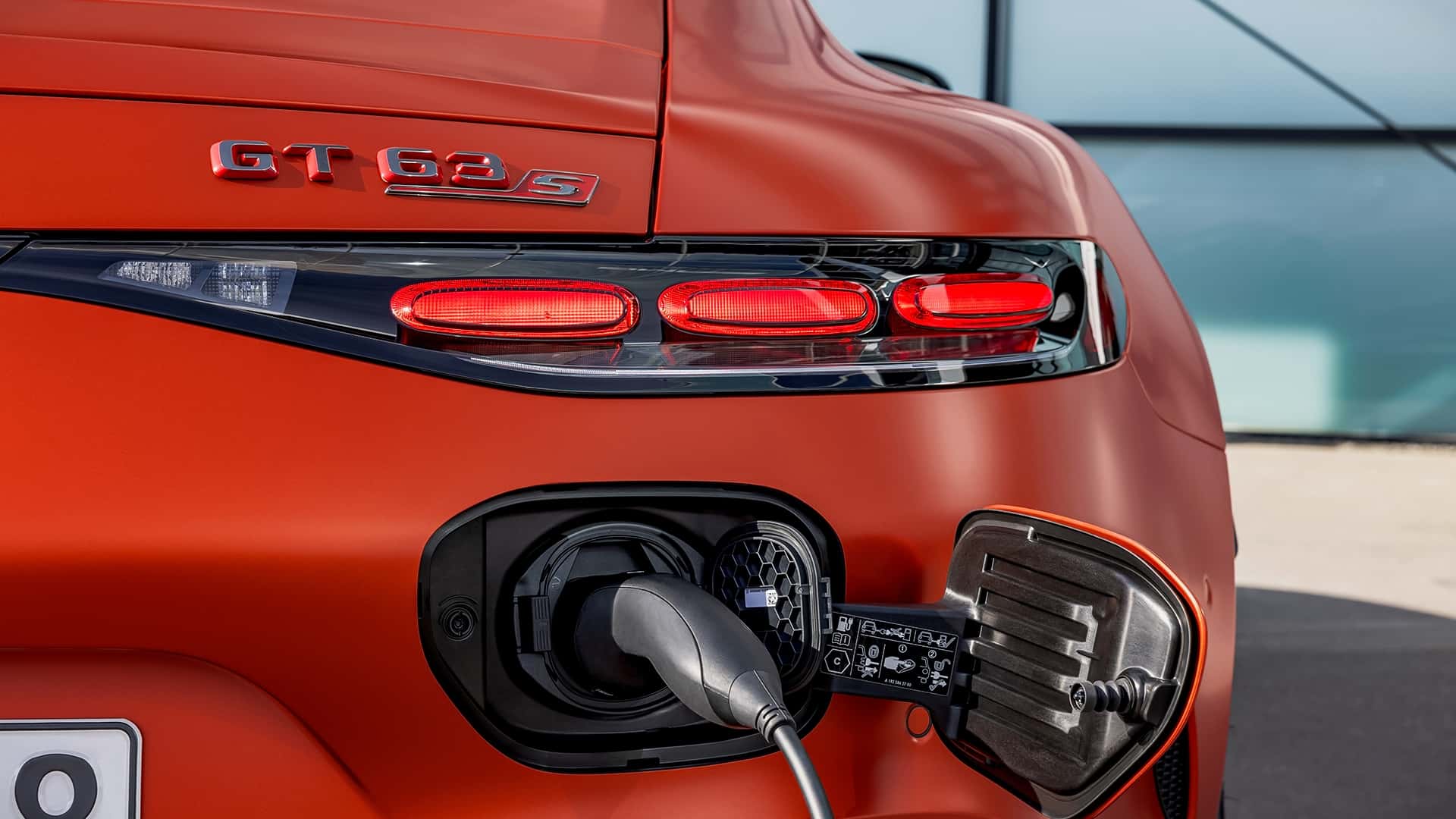
THE MERCEDES AMG GT HYBRID HAS 9 MILES OF ELECTRIC RANGE ON PURPOSE
The 816-horsepower hybrid's battery is intentionally compromised to offer little energy.
Range is almost everything when it comes to electric vehicles. It's surprising, then, to hear that a lot of hybrid cars, even plug-ins, offer very little all-electric driving range. In the case of fast hybrids like the elegantly-named Mercedes-AMG GT 63 S E PERFORMANCE Coupé, this is an intentional decision. Its 9 miles of electric range is more or less just a nice plus.
The new two-door performance offering from AMG has a battery because it's a good match for a high-performance combustion drivetrain. The car's 400-volt hybrid system consists of 560 individual cells optimized to offer high charge and discharge rates, as opposed to a massive amount of energy. Its 6.1-kWh battery pack can discharge up to 204 horsepower (150 kilowatts) in a burst. That's more power than the outgoing Chevy Bolt, despite having a pack that's less than 1/10th the size. It can also absorb 134 horsepower (100kW) from the wheels, which is twice as fast as the Bolt could charge from a plug.
Battery cell and pack design is all about compromise. Factors like power density, energy density, cycle life, cost, and more have to be balanced to produce the right solution for the car in question. A low-power EV like a Fiat 500E is optimized to provide maximum range at the cost of output power. Its 42-kWh battery pack can provide just 117hp (86 kW), but it can go 149 miles on a charge. The Corvette E-Ray, on the opposite end of the spectrum, has a small pack; just 1.1kWh is usable. Despite this, it can regenerate more power under braking than the Fiat can put to the ground in anger. The E-Ray's battery is capacitor-like and power-dense, not energy-dense.
The AMG's hybrid system is the same way. It's a compliment to the existing combustion drivetrain, increasing both performance and efficiency. Keep in mind, the new 816 hp Mercedes in question emits just 188 g/km of CO2, which is the same as a 382 hp BMW M340i xDrive.
So while kilowatt-hours and range might be the headline figures for BEVs and PHEVs, it's far from the entire story. The world of hybrid cars especially is complicated by the realities of higher cycle life requirements and other constraints that make designing their batteries an interesting challenge. That challenge should be appreciated—it's a very interesting one—and not just dismissed as a small amount of range in cars that should always have more.
More Hybrid AMGs
2024-04-22T15:52:17Z dg43tfdfdgfd